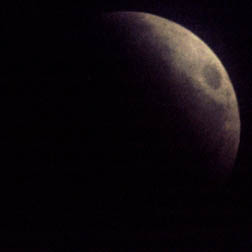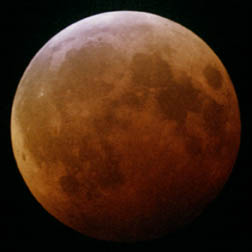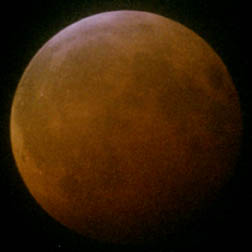
Lunar Total Eclipse
by Lorenzo Comolli

 |
Lunar Total Eclipse by Lorenzo Comolli |
 |

About a year after the wonderful 20
january 2000 Lunar Total Eclipse, the sky gave as another chance to
observe the game of lights and shadows between Sun, Earth and Moon.
The beauty of a Lunar Total Eclipse is
that it can be observed in tranquillity, because the total phase last an
average of about an hour. Not like the European Total Solar Eclipse of
1999... So there is all the time to do the observations at naked eye, binocular
and telescope, to realize a lot of images of the event, to chat with the
friend about the event.
This Eclipse was also very comfortable
to observe in the evening. The Totality was from 20.49 to 21.51 of local
time (19.49-20.51 UT).
One of the principal observations done
during the Eclipse regards the brightness of the Moon. It's known that
the typical red colour of the eclipsed Moon is due to the solar light filtered
by the Earth's high atmosphere, so the more the atmosphere is "dirty",
the more the Eclipse is dark. For example the 10 dicember 1992 eclipse
was very dark because of the preceding eruption of Mt Pinatubo volcano
(june 1991).
The observation of this year state a level
of brightness between 2 and 3 in the Danjon scale (0=very dark, 4=very
bright). My observation is about 3. Comparing this Eclipse with the last
ones, this is the more bright of the last years.
From my location the clouds had a key
role, because they let us worry about seeing the Totality. Luckily a tear
in the clouds permitted us to observe the clue of the phenomena.




Here follow all the images realized, at about 15 min steps (when the cluods permitted). All the images are realized with a 8" SC at f/10, Kodak Supra 400 (Partial phases) and PJ-400 (Totality). Under the images there are the times of the image (in UT, universal time), and the exposure time in seconds.

17.35-1/500

















For every comment about images, or about my bad english: comolli@libero.it
|
|